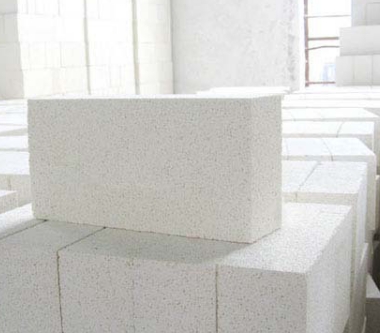- 09
- Feb
What are the factors affecting the performance of lightweight thermal insulation bricks?
What are the factors affecting the performance of brik mkpuchi okpomọkụ dị arọ?
Lightweight thermal insulation bricks have complex structure and harsh working environment, and many factors affect their thermal insulation effect. Moreover, various factors influence each other and are related to each other, making analysis and research difficult to carry out. However, among the many influencing factors, the material composition and structure, air permeability and air permeability, bulk density and temperature of brik mkpuchi okpomọkụ dị arọ are the main factors.

Material composition and structure The chemical mineral composition and crystalline structure of the material are the primary factors affecting the thermal conductivity of lightweight insulation bricks. Generally speaking, the more complex the crystal structure of the lightweight insulation brick, the lower its thermal conductivity. The solid phase of a substance can be simply divided into a crystalline phase and a glass phase. Due to vibration and collision, atoms (ions) transfer kinetic energy from atoms (ions) with higher kinetic energy to other atoms (ions) with lower kinetic energy, and the atoms (ions) in the glass phase are arranged in a disorderly manner, so The resistance encountered during movement is higher than the orderly arrangement of crystal phases. Therefore, the thermal conductivity of the glass phase is lower than that of the crystalline phase. However, after the temperature rises to a certain level, the viscosity of the glass phase decreases, the resistance to movement of atoms (ions) decreases, and the thermal conductivity of the glass phase increases. But the crystalline phase is the opposite. When the temperature rises, the kinetic energy of the atoms (ions) increases and the vibration increases, so that the free path is shortened and the thermal conductivity decreases. In the internal structure of light insulation bricks, the solid phase is separated by many pores of different sizes, and continuous solid phase transfer cannot be formed in terms of heat. Gas phase heat transfer replaces most of the solid phase heat transfer, so heat conduction The coefficient is very low.
The porosity and the porosity of refractories with pore characteristics are inversely proportional to the thermal conductivity coefficient, and the thermal conductivity coefficient rises linearly with the increase of the porosity. At this time, the performance of lightweight insulation bricks is particularly prominent. But when the porosity is the same, the smaller the pore size, the more uniform the distribution, and the lower the thermal conductivity. In the small-sized pores, the air in the pores is completely absorbed in the pore walls, the thermal conductivity in the pores is reduced, and the thermal conductivity in the pores is reduced. However, as the size of the air hole increases, the heat radiation on the inner wall of the air hole and the convective heat transfer of the air in the air hole increase, and the thermal conductivity also increases. According to relevant literature, when the heat radiation is very small, especially when the long pores are formed in the jet direction, the small pores often produce heat radiation effects. Sometimes, the heat transfer of a single pore product is higher than that of the product with pores. The phenomenon of becoming hotter. The thermal conductivity of closed pores is smaller than that of open pores.
The thermal conductivity of thermal insulation bricks with lighter bulk density has a linear relationship with bulk density, that is, as the bulk density increases, the thermal conductivity also increases. The volume density directly reflects the internal porosity of the lightweight insulation brick. The low bulk density indicates that there are a lot of pores inside the product, the contact points between the solid particles are reduced, the solid phase heat conduction is reduced, and the thermal conductivity is reduced.
The thermal conductivity of light-temperature thermal insulation brick has a linear relationship with temperature, that is, the thermal conductivity increases with the increase of temperature. Compared with dense refractory materials, the thermal conductivity of lightweight insulation bricks decreases with increasing temperature. The reason is that dense refractory materials mainly conduct heat in the solid phase. When the temperature rises, the thermal movement of the product molecules intensifies, and the thermal conductivity increases. The structure of lightweight insulation bricks is dominated by gas phase (65~78%). When the temperature rises, the change in thermal conductivity is always smaller than that of the solid phase.
